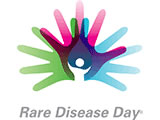Exercise and the heart: Hitting your target rate
Want to get the most out of your physical activity? Dr. Theodore Shybut, assistant professor of orthopedic surgery at Baylor College of Medicine said regular exercise can reduce blood pressure, increase good cholesterol, reduce bad and total cholesterol, increase overall fitness and improve insulin sensitivity—very important if you have type 2 diabetes or are pre-diabetic.
“Just being active on a regular basis is key,” he said. “The Centers for Disease Control and Prevention and the American College of Sports Medicine consensus statement recommends 30+ minutes of moderate intensity activity most, preferably all days of the week.”
To avoid over exertion or not enough exercise, there is an easy way to make sure you are getting the right amount of exercise: by hitting your target heart rate. The American Heart Association says to find your target heart rate during exercise, periodically:
- On the inside of your wrist near your thumb, take your pulse
- Using the tips of your first two fingers, press lightly over the blood vessels on your wrist.
- Count your pulse for 10 seconds and multiply the number by six to determine your beats per minute.
Use the table below to find your target heart rate range and average maximum heart rate:
![heart-rates[1]](https://blogs.bcm.edu/wp-content/uploads/2015/03/heart-rates1.png)
Additional Resources
Sports medicine expert addresses great debate on running versus walking.




Hello Audrey,
Thanks for the infograph. Its really effective plan. Will share the story with my other friends. Cheers.
Pingback: No pain, no gain? Tips to avoid overtraining